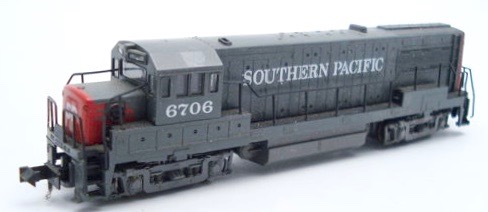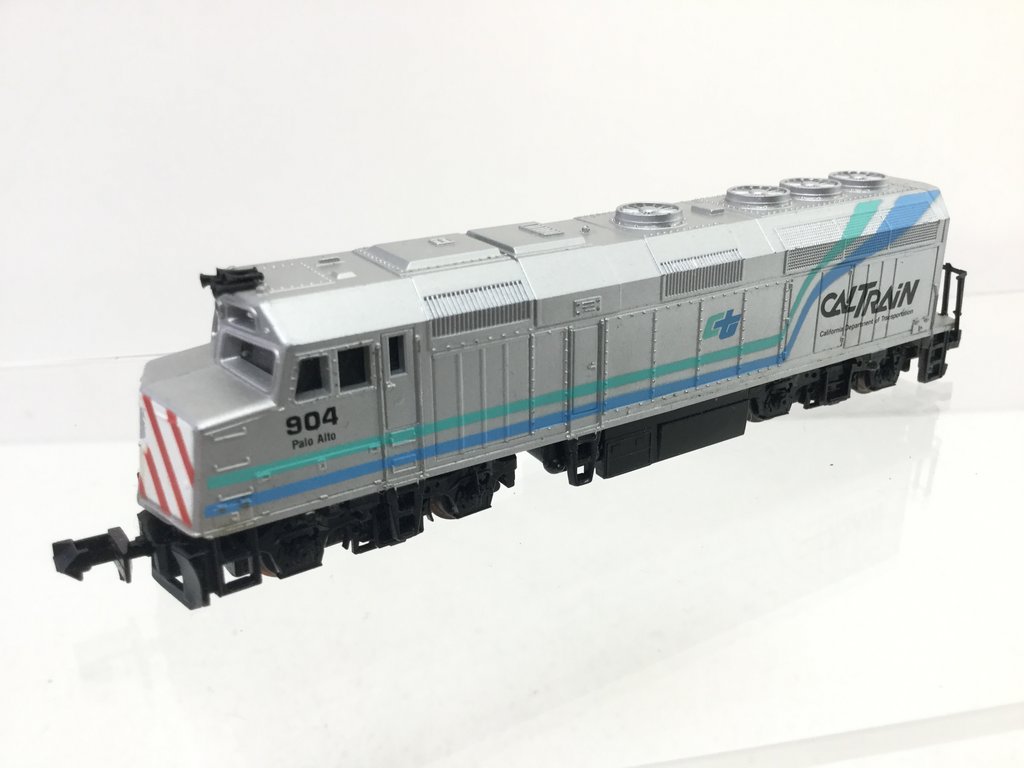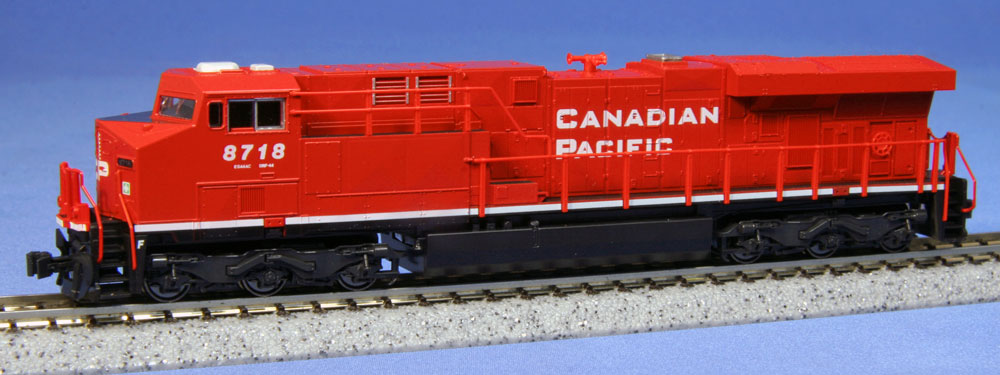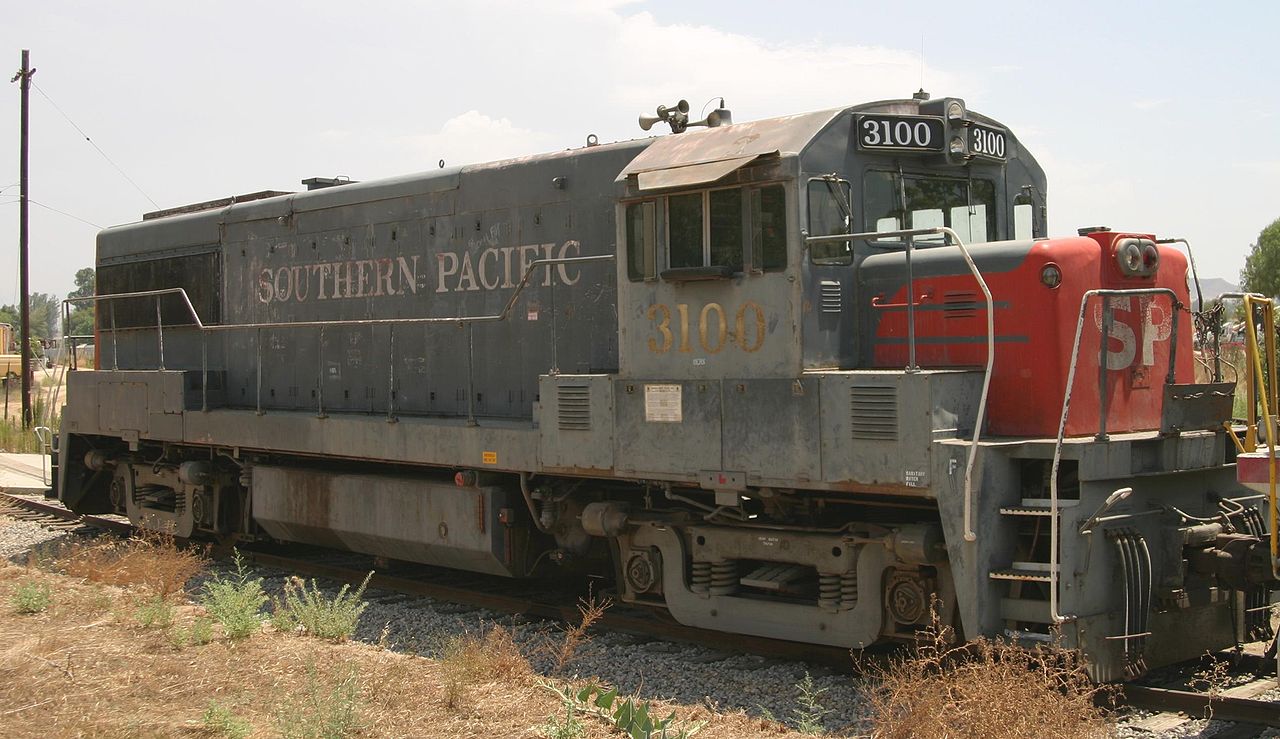Model Information: This model was first produced by Kato for Atlas in 1989. The model was retooled and production transferred to China in 1998. In 2003, the mechanism was updated again and a slow speed motor was introduced.
Although the retooling was performed in 1998, this model has all the features one would expect of a 2000's vintage design. A split-frame, flywheels, blackened wheels and body-mounted couplers. It runs quite well and can pull plenty of cars.
Although the retooling was performed in 1998, this model has all the features one would expect of a 2000's vintage design. A split-frame, flywheels, blackened wheels and body-mounted couplers. It runs quite well and can pull plenty of cars.
DCC Information: The early Kato models are all kinda-sorta DCC friendly, but IMHO, I wouldn't bother. Buy a new mechanism and drop your old shell on it. It will likely fit (no promises though!). All the 1998+ accept DCC boards and many come with factory-installed decoders. For the DCC-Ready versions, they accept the DN163A0 decoder: 1 Amp N Scale Mobile Decoder for Atlas N-Scale GP40-2, U25B, SD35, Trainmaster, B23-7 and others from digitrax.com.
Prototype History: The GE U25B was General Electric's first independent entry into the United States domestic Diesel-electric locomotive railroad market for heavy production road locomotives since 1936. From 1940 through 1953, GE participated in a design, production, and marketing consortium (Alco-GE) for diesel-electric locomotives with the American Locomotive Company. Starting in 1956 GE launched its Universal Series of diesel locomotives for the export market. The U25B was the first attempt at the domestic market since its termination of the consortium agreement with Alco.
The U25B (nicknamed U-Boat) was the first commercially successful domestic diesel electric road locomotive designed, built, and sold by General Electric after its split with the American Locomotive Company (Alco), a company dating back to the steam era. Along with Ingersoll-Rand, GE built the first viable American diesel-electric locomotive in 1928. In 1940 GE partnered with ALCO to enter regular production of Diesel locomotives. They were successful in building locomotives for switching and short-haul applications, having introduced the first road-switcher design in 1941 (which would supplant the carbody design developed by the Electro-Motive Corporation by the mid-1950s) and gained about a 40% market share during the Dieselization era. ALCO-GE's efforts in main line road locomotives had not been successful at breaking into EMD's dominant position in that market, although they introduced a successful gas turbine-electric locomotive to market in 1952. In 1953 GE went independent from ALCO in locomotive production, with their new subsidiary GE Rail taking over the gas turbine-electric venture while they sought a supplier of more reliable Diesel engines suitable for road locomotives. Production of Cooper-Bessemer powered Universal Series locomotives began in 1956 and some 400 export locomotives were sold before the U25B was offered in the United States. The U25B was announced by General Electric as a domestic model on April 26, 1960. It was the first locomotive powered by GE's highly successful FDL-16 engine.
From Wikipedia
The U25B (nicknamed U-Boat) was the first commercially successful domestic diesel electric road locomotive designed, built, and sold by General Electric after its split with the American Locomotive Company (Alco), a company dating back to the steam era. Along with Ingersoll-Rand, GE built the first viable American diesel-electric locomotive in 1928. In 1940 GE partnered with ALCO to enter regular production of Diesel locomotives. They were successful in building locomotives for switching and short-haul applications, having introduced the first road-switcher design in 1941 (which would supplant the carbody design developed by the Electro-Motive Corporation by the mid-1950s) and gained about a 40% market share during the Dieselization era. ALCO-GE's efforts in main line road locomotives had not been successful at breaking into EMD's dominant position in that market, although they introduced a successful gas turbine-electric locomotive to market in 1952. In 1953 GE went independent from ALCO in locomotive production, with their new subsidiary GE Rail taking over the gas turbine-electric venture while they sought a supplier of more reliable Diesel engines suitable for road locomotives. Production of Cooper-Bessemer powered Universal Series locomotives began in 1956 and some 400 export locomotives were sold before the U25B was offered in the United States. The U25B was announced by General Electric as a domestic model on April 26, 1960. It was the first locomotive powered by GE's highly successful FDL-16 engine.
From Wikipedia
Road Name History: 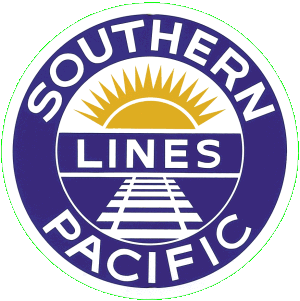 The Southern Pacific Transportation Company (reporting mark SP), earlier Southern Pacific Railroad and Southern Pacific Company, and usually called the Southern Pacific or (from the railroad's initials) Espee, was an American Class I railroad. It was absorbed in 1988 by the company that controlled the Denver and Rio Grande Western Railroad and eight years later became part of the Union Pacific Railroad.
The Southern Pacific Transportation Company (reporting mark SP), earlier Southern Pacific Railroad and Southern Pacific Company, and usually called the Southern Pacific or (from the railroad's initials) Espee, was an American Class I railroad. It was absorbed in 1988 by the company that controlled the Denver and Rio Grande Western Railroad and eight years later became part of the Union Pacific Railroad.
The railroad was founded as a land holding company in 1865, later acquiring the Central Pacific Railroad by lease. By 1900 the Southern Pacific Company was a major railroad system incorporating many smaller companies, such as the Texas and New Orleans Railroad and Morgan's Louisiana and Texas Railroad. It extended from New Orleans through Texas to El Paso, across New Mexico and through Tucson, to Los Angeles, through most of California, including San Francisco and Sacramento. Central Pacific lines extended east across Nevada to Ogden, Utah, and reached north through Oregon to Portland. Other subsidiaries eventually included the St. Louis Southwestern Railway (Cotton Belt), the Northwestern Pacific Railroad at 328 miles (528 km), the 1,331 miles (2,142 km) Southern Pacific Railroad of Mexico, and a variety of 3 ft (914 mm) narrow gauge routes.
In 1929 SP/T&NO operated 13848 route-miles not including Cotton Belt, whose purchase of the Golden State Route circa 1980 nearly doubled its size to 3,085 miles (4,965 km), bringing total SP/SSW mileage to around 13,508 miles (21,739 km).
By the 1980s route mileage had dropped to 10,423 miles (16,774 km), mainly due to the pruning of branch lines. In 1988 the Southern Pacific was taken over by D&RGW parent Rio Grande Industries. The combined railroad kept the Southern Pacific name due to its brand recognition in the railroad industry and with customers of both constituent railroads. Along with the addition of the SPCSL Corporation route from Chicago to St. Louis, the total length of the D&RGW/SP/SSW system was 15,959 miles (25,684 km).
By 1996 years of financial problems had dropped SP's mileage to 13,715 miles (22,072 km), and it was taken over by the Union Pacific Railroad.
Read more on Wikipedia.

The railroad was founded as a land holding company in 1865, later acquiring the Central Pacific Railroad by lease. By 1900 the Southern Pacific Company was a major railroad system incorporating many smaller companies, such as the Texas and New Orleans Railroad and Morgan's Louisiana and Texas Railroad. It extended from New Orleans through Texas to El Paso, across New Mexico and through Tucson, to Los Angeles, through most of California, including San Francisco and Sacramento. Central Pacific lines extended east across Nevada to Ogden, Utah, and reached north through Oregon to Portland. Other subsidiaries eventually included the St. Louis Southwestern Railway (Cotton Belt), the Northwestern Pacific Railroad at 328 miles (528 km), the 1,331 miles (2,142 km) Southern Pacific Railroad of Mexico, and a variety of 3 ft (914 mm) narrow gauge routes.
In 1929 SP/T&NO operated 13848 route-miles not including Cotton Belt, whose purchase of the Golden State Route circa 1980 nearly doubled its size to 3,085 miles (4,965 km), bringing total SP/SSW mileage to around 13,508 miles (21,739 km).
By the 1980s route mileage had dropped to 10,423 miles (16,774 km), mainly due to the pruning of branch lines. In 1988 the Southern Pacific was taken over by D&RGW parent Rio Grande Industries. The combined railroad kept the Southern Pacific name due to its brand recognition in the railroad industry and with customers of both constituent railroads. Along with the addition of the SPCSL Corporation route from Chicago to St. Louis, the total length of the D&RGW/SP/SSW system was 15,959 miles (25,684 km).
By 1996 years of financial problems had dropped SP's mileage to 13,715 miles (22,072 km), and it was taken over by the Union Pacific Railroad.
Read more on Wikipedia.
Brand/Importer Information: In 1924 Stephan Schaffan, Sr. founded the Atlas Tool Company in Newark, New Jersey. In 1933 his son, Stephan Schaffan, Jr., came to work for his father at the age of sixteen. Steve Jr. built model airplanes as a hobby and frequented a local hobby shop. Being an enterprising young man, he would often ask the owner if there was anything he could do to earn some extra spending money. Tired of listening to his requests, the hobby-store owner threw some model railroad track parts his way and said, "Here, see if you can improve on this".
In those days, railroad modelers had to assemble and build everything from scratch. Steve Jr. created a "switch kit" which sold so well, that the entire family worked on them in the basement at night, while doing business as usual in the machine shop during the day.
Subsequently, Steve Jr. engineered the stapling of rail to fiber track, along with inventing the first practical rail joiner and pre-assembled turnouts and flexible track. All of these products, and more, helped to popularize model railroading and assisted in the creation of a mass-market hobby. The budding entrepreneur quickly outgrew the limitations of a basement and small garage operation. Realizing they could actually make a living selling track and related products, Steve and his father had the first factory built in Hillside, New Jersey at 413 Florence Avenue in 1947. On September 30, 1949, the Atlas Tool Company was officially incorporated as a New Jersey company.
In 1985, Steve was honored posthumously for his inventions by the Model Railroad Industry Association and was inducted into the Model Railroad Industry Hall of Fame in Baltimore, Maryland. In addition, Steve was nominated and entered into the National Model Railroad Association Pioneers of Model Railroading in 1995.
In the early 1990s, the Atlas Tool Company changed its name to Atlas Model Railroad Company, Inc.
In those days, railroad modelers had to assemble and build everything from scratch. Steve Jr. created a "switch kit" which sold so well, that the entire family worked on them in the basement at night, while doing business as usual in the machine shop during the day.
Subsequently, Steve Jr. engineered the stapling of rail to fiber track, along with inventing the first practical rail joiner and pre-assembled turnouts and flexible track. All of these products, and more, helped to popularize model railroading and assisted in the creation of a mass-market hobby. The budding entrepreneur quickly outgrew the limitations of a basement and small garage operation. Realizing they could actually make a living selling track and related products, Steve and his father had the first factory built in Hillside, New Jersey at 413 Florence Avenue in 1947. On September 30, 1949, the Atlas Tool Company was officially incorporated as a New Jersey company.
In 1985, Steve was honored posthumously for his inventions by the Model Railroad Industry Association and was inducted into the Model Railroad Industry Hall of Fame in Baltimore, Maryland. In addition, Steve was nominated and entered into the National Model Railroad Association Pioneers of Model Railroading in 1995.
In the early 1990s, the Atlas Tool Company changed its name to Atlas Model Railroad Company, Inc.
Item created by: gdm on 2016-03-11 07:37:33. Last edited by CNW400 on 2020-07-23 12:16:27
If you see errors or missing data in this entry, please feel free to log in and edit it. Anyone with a Gmail account can log in instantly.
If you see errors or missing data in this entry, please feel free to log in and edit it. Anyone with a Gmail account can log in instantly.


